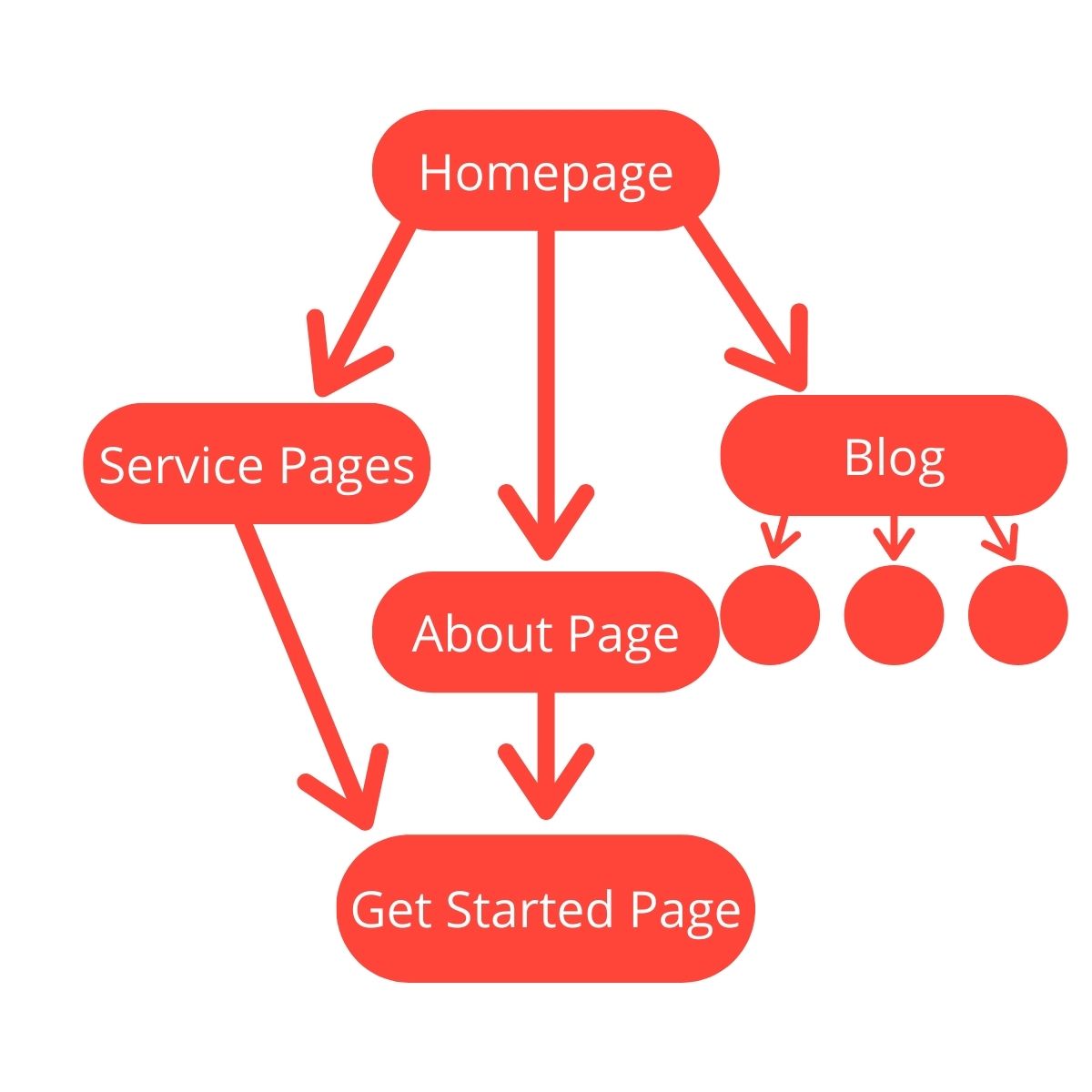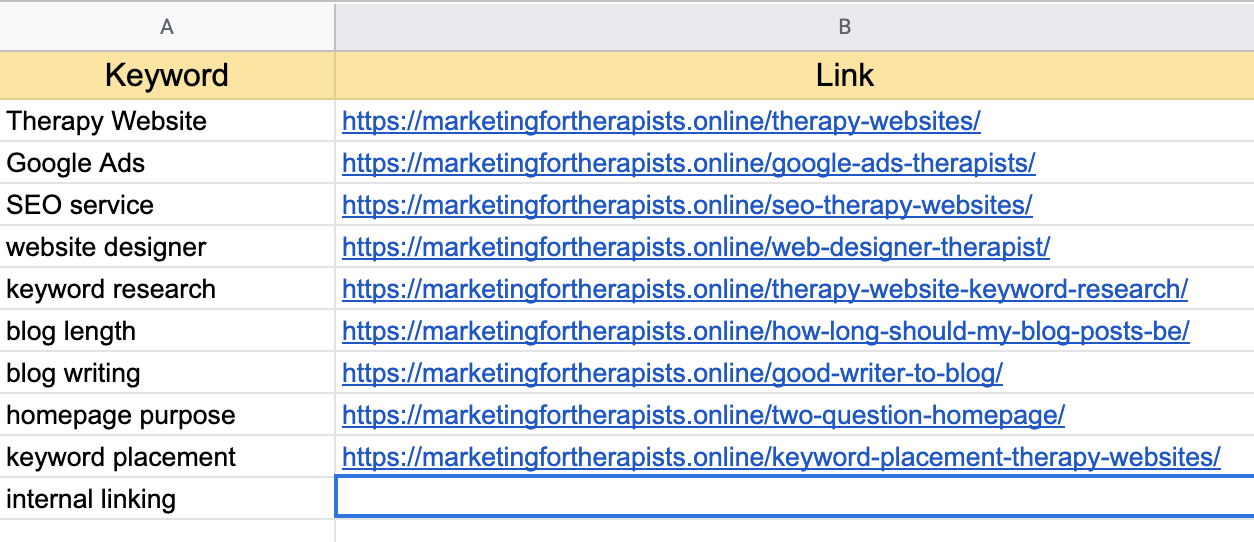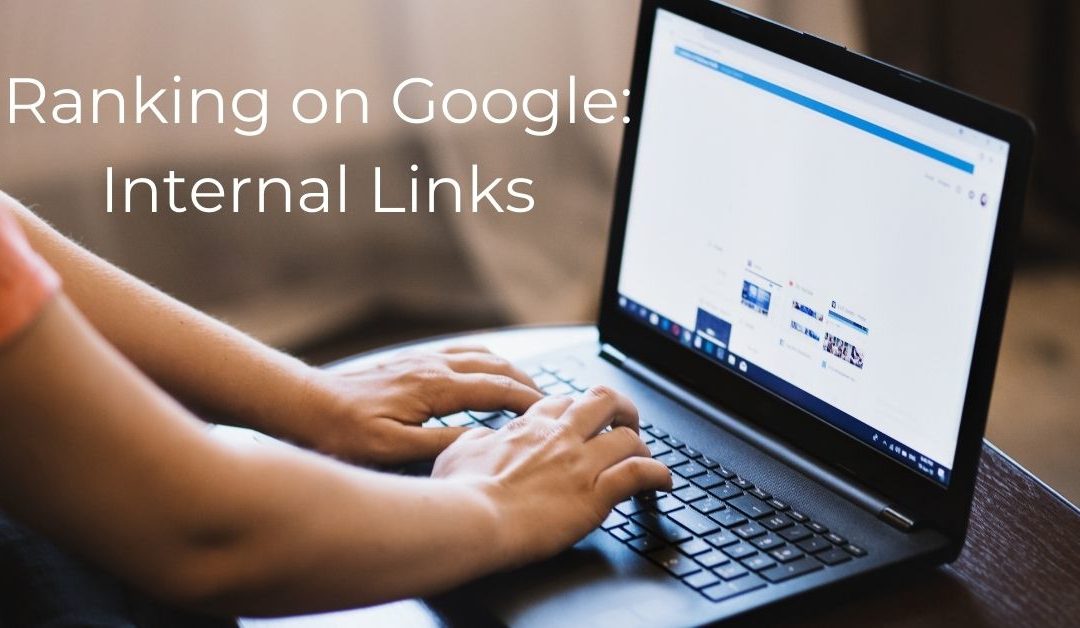When a therapist is looking to rank their therapy website on Google, there are some key components to doing so effectively. A few that we have touched on already are effective keyword research as well as keyword placement.
Another great strategy to help your website get seen is what is referred to as internal linking, or building links from one page or post on your website to another. You can think about internal linking as a map of your website where visitors (and Google) can easily navigate your content and find what they are looking for.
Why is Internal Linking Important?
No one likes visiting a website and being unable to find what they are looking for. In most situations, the user will likely bounce, or leave, your website. Internal links provide a roadmap so that website visitors can easily navigate your content.
This is also true for Google’s bots. If you have a main page found by Google, the bot will crawl that page as well as any pages linked to from that page. There are a few exceptions, but they typically don’t apply to therapy websites. (For example, you don’t want more than about 150 internal links on any particular page, which isn’t an issue for most therapists.)
The opposite is also true: if you have pages that are not linked to by other pages on your site, it’s unlikely that that content will be discovered.
Internal links also help to establish a hierarchy of the content on your website with the pages that have the most links being those that are most important. Simply linking from each page to another is not an effective strategy because it makes it seem that all the content is equally valuable.
Determining the Ideal Structure of Your Site
Your homepage will likely have the highest value of any page on your website. This is due to it being the main domain URL (without any suffix) and will likely have the most links to it, both internal as well as external (more on this later).
In simplest terms, the homepage of your website then shares its value with the pages that it links to. It makes sense then that these pages should also be highly valuable. For most therapists, these pages will include your service pages, your about page, and your contact page.
If you imagine your website being mapped out, it might look something like this:

Your homepage is right at the top which links to the other pages on your website including your blog. This can be through the main navigation menu, buttons you’ve placed on your website, or contextual links (links using words within the text). All of which are types of internal links.
Your Site Structure is Your Invisible Tour Guide
Imagine guiding your prospective clients on a journey. Once they visit your homepage, where do you want them to go next? For most therapy websites, your about page is the second most frequently visited page.
It makes sense that your prospective clients want to know a little about you before they contact you for therapy. After they read about you and your approach, you will likely want to direct them to your contact page or your FAQ page.
If you find that people are booking calls with you only to find yourself answering the same questions again and again, it might be a good idea to make your FAQ page more prominent.
Adding a Related Posts Section to Your Blog
Once you have a handful of blogs that are related to one another- whether by content or theme- it might be a good idea to add a ‘Related Posts’ section at the bottom of your blog posts. This is made easier if you have your blogs divided by categories and/or tags.
These sections are helpful as they tell readers that if they enjoyed the content and want to learn more, they can easily do so. That’s really all that internal linking is about- making your content more readily accessible to your website visitors.
Most platforms, themes, and builders offer easy ways to add a ‘Related Posts’ section, so if you’re having trouble, turn to the Mighty Google and type in what you’re trying to do. There is a multitude of helpful forums and FaceBook groups willing to provide guidance.
Consistency in Anchor Text
So first, what is anchor text? Anchor text is the word(s) that someone would click on when they see a contextual link. You want to have consistency on both ends. What I mean is that you want to use similar words and phrases to point to the same page.
Take a look at my keyword spreadsheet:

As you can see, I have specific keywords as well as the corresponding page that I want to link to. This allows me to quickly identify what internal links I need to create on each blog post or page.
For example, if I mention therapy websites or websites for therapists, I’m going to put a link to my website services page. Again, consistency is key. It would not be beneficial to link to different pages each time I mention therapy websites if I hope to rank this particular page for this term.
Even if other pages are related to the keyword ‘therapy websites’ (as would be the case for the category page for my blog as well as even my homepage), it’s more helpful to pick one page and be consistent. That way Google learns that this is what that page is about.
Conclusion
Internal linking is a helpful strategy for organizing your content as well as helping Google learn the purpose of said content.
As with any SEO strategy, having a plan is helpful. Reviewing older blog posts for new ways to incorporate keywords can also give new life to your content.
Creating a guide that summarizes several pieces of content with links to each more robust article is a really good idea as well.
In the end, it’s all about the same thing: being helpful. Your information can’t help anyone if they can’t find it.

